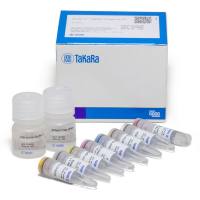Screening of Small-Molecule Compounds as Inhibitors of HCV Entry
互联网
665
The hepatitis C virus (HCV) has infected some 170 million people worldwide, and is expected to pose a significant medical problem for the foreseeable future. No vaccine is presently available, and the current antiviral therapies (pegylated interferon-α and ribavirin) are characterized by limited efficacy, high costs, and substantial side effects. Initiation of infection requires attachment of the HCV virus to the cell surface followed by viral entry and represents a critical determinant of tissue tropism and pathogenesis. Small molecules that inhibit the virus at the stage of viral entry, for example, by blocking the interactions between viral envelope glycoprotein and cellular receptor or coreceptor or by inhibiting the viral fusion process, would serve as attractive antiviral drugs. Recent development of HCV pseudoparticles (HCVpp), displaying unmodified and functional HCV glycoprotein on the surface of retroviral core particles, has greatly facilitated studies of HCV entry and provides an essential tool for the identification and characterization of molecules that block HCV entry. We have adapted the HCVpp infection assay with HCVpp harboring a luciferase reporter to a 96-well format and screened a small-molecule compound library to identify inhibitors of HCV entry. Such active viral entry inhibitors have the potential to be first-in-class antiviral drugs that can be incorporated into combinations of multiple drugs with different targets for the treatment of chronic HCV infection.









